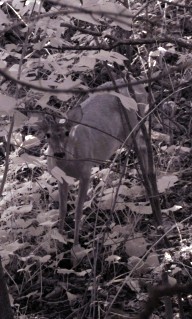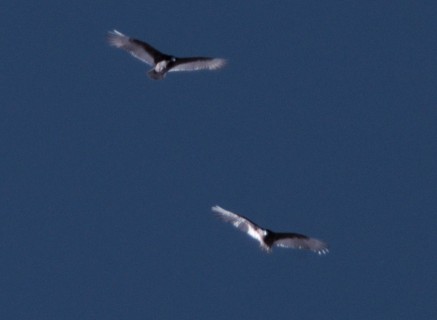Pine trees take on a furry appearance in infrared. When illuminated from behind, the needles take on a dazzling silver color.
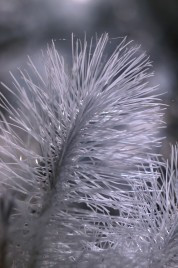
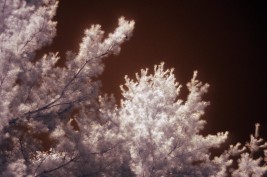
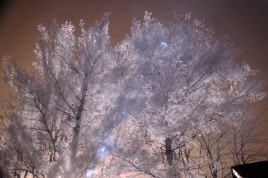
The first photograph shows a grassy lawn full of dandelions. Only the seed head
absorbs infrared light. The surrounding grass is white.
The trunks of deciduous trees appear dark in near-infrared, presenting a strong contrast with the white leaves.
Lower right: Infrared photo of low clouds over a mountain.
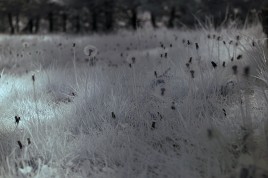
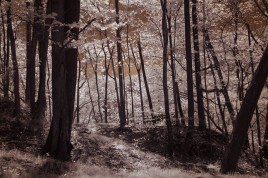
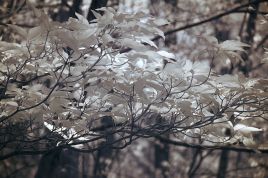
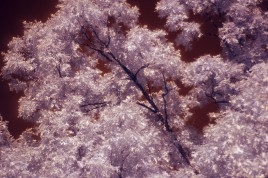
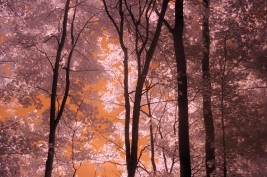
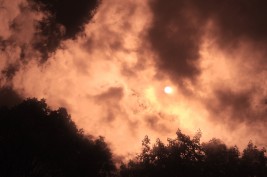
Left: Infrared photo of the Moon in the early morning.
Right: Infrared photo of trees in shadow in the early morning.
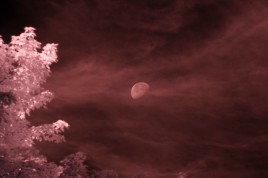
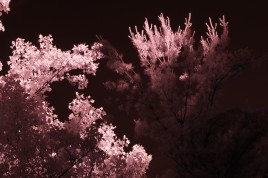
Red and blue channel swapping
The most common manipulation for infrared photographs is to swap the red and blue channels. This makes the sky appear a more natural dark blue instead of dark orange, but has no effect on the color of white objects such as trees and clouds. It is usually necessary to reduce the color saturation as well. Pine trees take on a windswept appearance when photographed in infrared, while clouds become more filamentous due to the increased contrast with the almost black sky. The last one is an infrared photo of a tree a few moments before sunset.

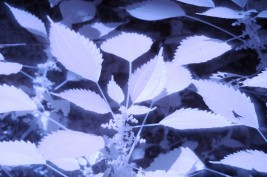
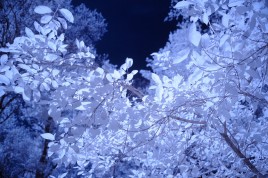
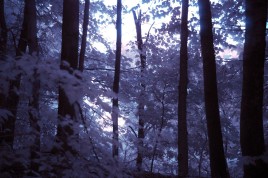
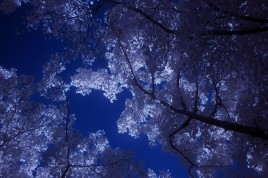
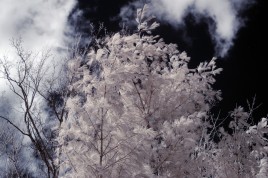
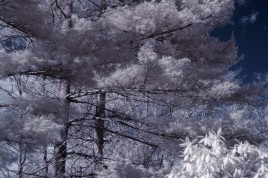
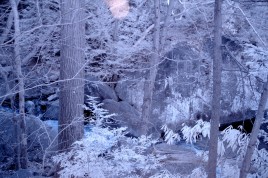
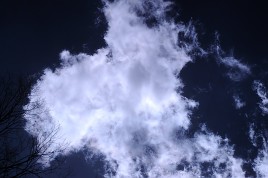
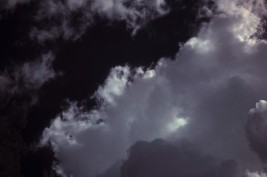
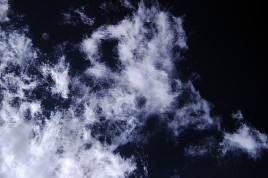

These three images are infrared photos of the Moon and a passing airplane framed by trees in the early morning.
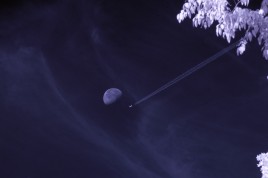
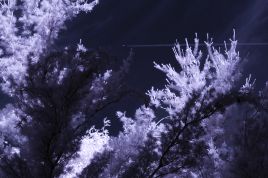
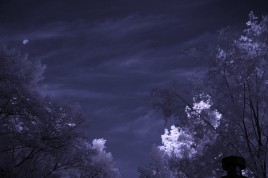
Left: Infrared photo of trees in the early morning. Converted to grayscale.
Center: Infrared photo of trees in front of a partly cloudy sky. This photo was taken with the cheapest lens I own, a plastic 70-300 zoom, at its highest magnification—proof that even a mediocre lens can sometimes surprise you with its sharpness.
Third from left: Infrared photo of a glass of water. I took this picture to prove to a skeptical friend of mine that water really is transparent in the near-infrared.
Right: Artificial trees stand out like a sore thumb in the infrared.
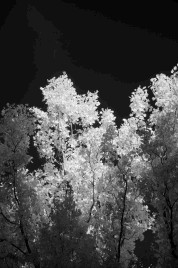
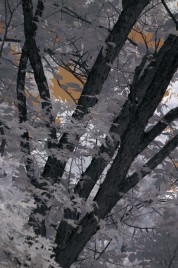

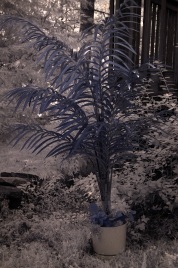
Flowers
Most flowers also appear white in the infrared. This flower resembles an Amaranthus, but the dark serrated leaves give it away. It is actually an Astilbe.
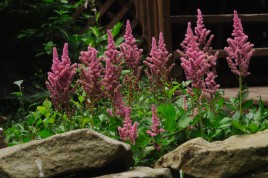
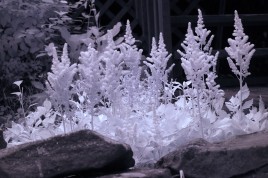
Prunus cerasifera
In visible light the leaves of the flowering plum (Prunus cerasifera) are maroon or dark red. However, in the near infrared these are among the brightest white of any tree.
Left: The first picture shows the tree as it appears to the naked eye.
Center: The second picture was taken with an IR-sensitive camera with both the IR-pass and IR-blocking filters removed, which caused the leaves to appear peach-colored instead of red.
Right: The third picture was taken using an R72 filter (720 nm cut-off). The red and blue channels have been swapped to make the sky appear blue instead of orange.
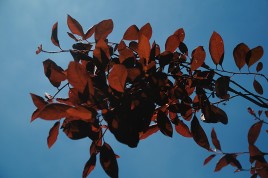
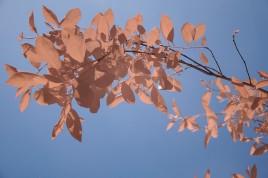
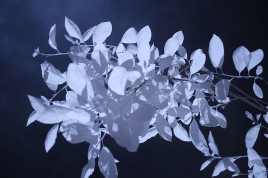
Other subjects
Insects, birds, and wild animals look about the same in infrared as they do in visible light.
